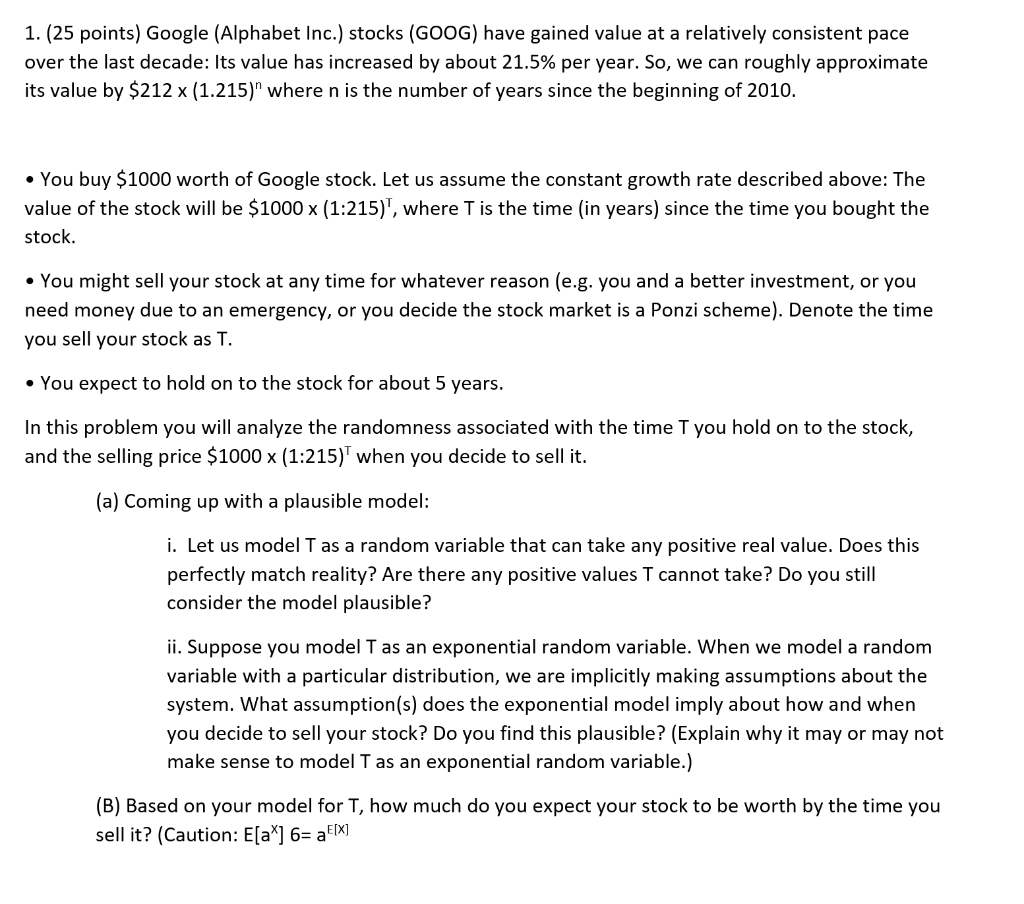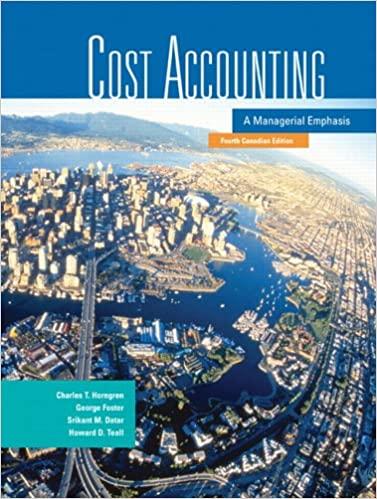
1. (25 points) Google (Alphabet Inc.) stocks (GOOG) have gained value at a relatively consistent pace over the last decade: Its value has increased by about 21.5% per year. So, we can roughly approximate its value by $212 x (1.215)" where n is the number of years since the beginning of 2010. You buy $1000 worth of Google stock. Let us assume the constant growth rate described above: The value of the stock will be $1000 x (1:215)", where T is the time (in years) since the time you bought the stock. You might sell your stock at any time for whatever reason (e.g. you and a better investment, or you need money due to an emergency, or you decide the stock market is a Ponzi scheme). Denote the time you sell your stock as T. You expect to hold on to the stock for about 5 years. In this problem you will analyze the randomness associated with the time T you hold on to the stock, and the selling price $1000 x (1:215) when you decide to sell it. (a) Coming up with a plausible model: i. Let us model T as a random variable that can take any positive real value. Does this perfectly match reality? Are there any positive values T cannot take? Do you still consider the model plausible? ii. Suppose you model T as an exponential random variable. When we model a random variable with a particular distribution, we are implicitly making assumptions about the system. What assumption(s) does the exponential model imply about how and when you decide to sell your stock? Do you find this plausible? (Explain why it may or may not make sense to model T as an exponential random variable.) (B) Based on your model for T, how much do you expect your stock to be worth by the time you sell it? (Caution: E[aX] 6= a[[X] 1. (25 points) Google (Alphabet Inc.) stocks (GOOG) have gained value at a relatively consistent pace over the last decade: Its value has increased by about 21.5% per year. So, we can roughly approximate its value by $212 x (1.215)" where n is the number of years since the beginning of 2010. You buy $1000 worth of Google stock. Let us assume the constant growth rate described above: The value of the stock will be $1000 x (1:215)", where T is the time (in years) since the time you bought the stock. You might sell your stock at any time for whatever reason (e.g. you and a better investment, or you need money due to an emergency, or you decide the stock market is a Ponzi scheme). Denote the time you sell your stock as T. You expect to hold on to the stock for about 5 years. In this problem you will analyze the randomness associated with the time T you hold on to the stock, and the selling price $1000 x (1:215) when you decide to sell it. (a) Coming up with a plausible model: i. Let us model T as a random variable that can take any positive real value. Does this perfectly match reality? Are there any positive values T cannot take? Do you still consider the model plausible? ii. Suppose you model T as an exponential random variable. When we model a random variable with a particular distribution, we are implicitly making assumptions about the system. What assumption(s) does the exponential model imply about how and when you decide to sell your stock? Do you find this plausible? (Explain why it may or may not make sense to model T as an exponential random variable.) (B) Based on your model for T, how much do you expect your stock to be worth by the time you sell it? (Caution: E[aX] 6= a[[X]







